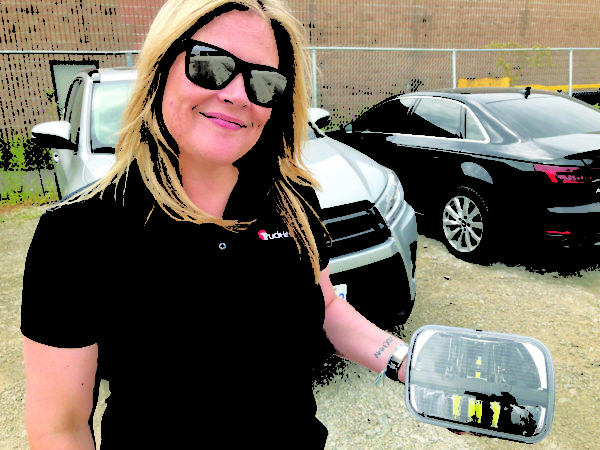Seeing the light

TORONTO, Ont. — When it comes to keeping a clean safety record, and reducing maintenance costs, a good light management program is essential. Spec’ing quality light emitting diode (LED) lights, and properly maintaining them is the key.
A holistic approach
Lights are an easy thing to overlook, but taking a holistic approach to managing a lighting system will yield the best results, according to Grote.
“Fleets with a complete lighting strategy in place will not only enhance the safety of their fleets but also virtually eliminate CSA and other fines as well as minimize the cost of repair and downtime,” says Kevin Cornelius, global marketing manager of power delivery at Grote Industries.
Go for quality
LED lights have become a no-brainer in most applications, having come down considerably in price, and lasting much longer than incandescents. Quality LED lights can be expected to last up to 15 years on a trailer.
According to Grote, a fleet with 1,000 trailers can expect to encounter three failures per day if running incandescent trailer lights. This could cost as much as $3 million over the life of those trailers, taking into consideration installation costs of $11.25 each time a bulb is replaced, as well as downtime.
Brent Edmonson, a technician with Vision Truck Group, says the market is rife with poor-quality offshore LED lights.
“They have vibration problems, they get full of moisture, the lenses crack and discolor,” Edmonson says of poor-quality LED lights. Even body builders will frequently install poor-quality LED lights on equipment, he notes.
“You have a nearly $1-million concrete pumper that will have crappy Chinese LEDs on it,” he says. “But there are lots of good ones out there.”
When Edmonson takes delivery of new equipment, he often swaps out no-name LEDs for brand name products.
The case for LED headlights
Some truck manufacturers have begun installing LED headlights in tractors.
Because the color of LEDs is closer to that of daylight than the yellowish hue of halogens, it appears brighter and can illuminate details of objects in the distance better.
They also help a driver see more at the edge of the road, where traditional lamps tend to fade out even on high beam, according to Grote. This improves safety and reduces eyestrain since it helps the driver more quickly and easily spot vehicles, pedestrians, signage, road conditions, and wildlife to prevent potential collisions and driving errors.
Some LED headlights can last 30,000 hours, or about 10 years.
“Incandescents are old technology,” says Meredith Vincent, regional sales manager, Ontario, for Truck-Lite. “That’s what fleets and owner-operators used forever, because that’s what was available.
Now that the LED is readily available and more cost-effective, it’s lower maintenance and takes years of usage before you need to change anything.”
But the argument against LED headlights is that they don’t generate enough heat to keep snow and ice off the lens. Some manufacturers have come up with solutions to this, however. Volvo has an LED headlight with a fan at the back that directs the heat to the front of the lamp. (LED lights actually do produce heat, but at the back).
Truck-Lite has heating elements in the glass that can be activated to melt snow and ice.
Don’t forget the grease
Since corrosion is the number one killer of lights and wiring harness connections, Vincent said it’s important to make inspecting connections and applying dielectric grease when necessary, part of the routine maintenance on a truck or trailer.
Mistakes she frequently sees in the field include not using enough dielectric compound, or using an alternative product such as brake clean, which is conductive and shouldn’t be introduced to the wiring system. When a light isn’t working, she suggests troubleshooting the electrical system before assuming the light itself is to blame.
“It could be plugged in incorrectly, or a connection could be loose. There are a lot of variables why (the light isn’t working),” she explains.
Asked what mistakes Edmonson has seen in the shop, he rhymes off “Too much electrical tape, not enough dielectric grease, and not enough shrink tube.”
It’s important to seal out moisture through proper techniques rather than slapping on electrical tape, he emphasized.
“Usually, the more electrical tape you see, the worse things are going to be. There’s usually a disaster hidden underneath the tape,” he said.
Have your say
This is a moderated forum. Comments will no longer be published unless they are accompanied by a first and last name and a verifiable email address. (Today's Trucking will not publish or share the email address.) Profane language and content deemed to be libelous, racist, or threatening in nature will not be published under any circumstances.